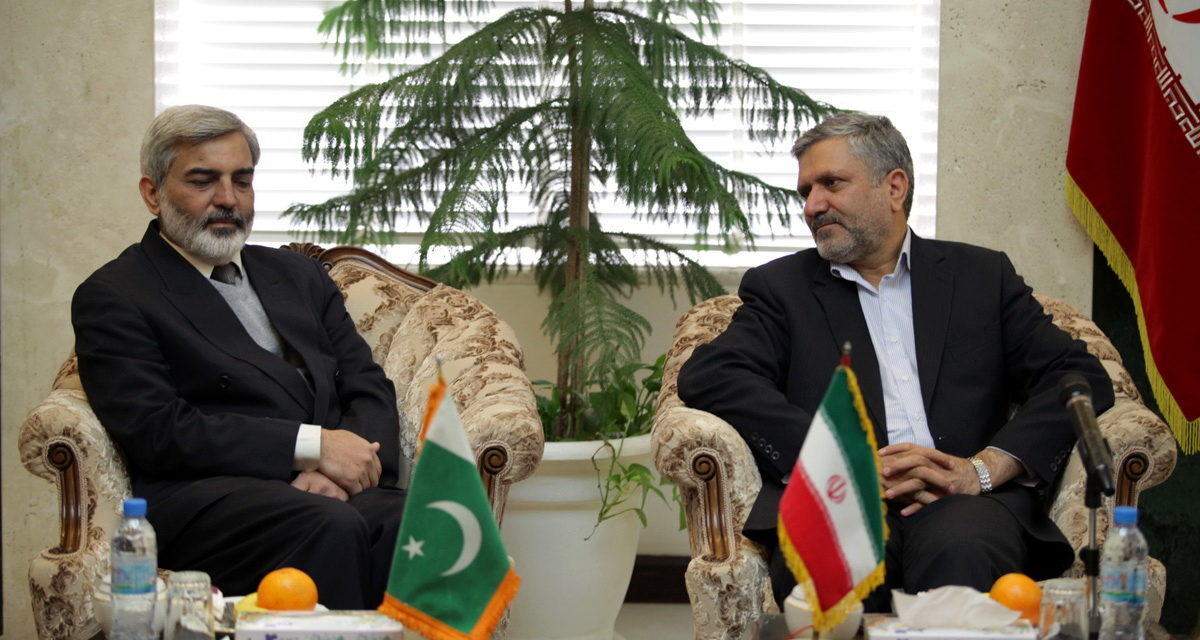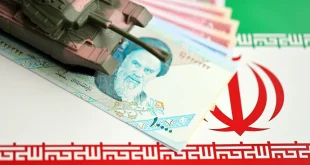With the re-imposition of sanctions on Iran, it is not just the Islamic Republic’s global, but regional energy links which have been shaken, spelling bad tidings for future economic and political cooperation. Alternatives to Iran’s drastically underinvested energy sector abound for those countries which, like Pakistan, are undertaking serious efforts to make up for their own deficits. What can the current state of relations between Pakistan and Iran tell us about the future of regional energy relations?
With a population of almost 200 million, Pakistan ranks as the twenty-sixth largest economy in the world. This demographic advantage brings with it greater urgency in matters regarding energy. According to the U.S. Energy Information Administration, 62% of Pakistan’s population is dependent on biofuels, such as wood, for cooking and heating. Given this high rate of dependency, the extent to which whole swaths of the country are lacking in electricity and gas becomes clear.
Recognizing the needs of the population, the Pakistani government has proposed a plan to increase domestic energy production and hydrocarbon exploration, increase natural gas imports, diversify the combined capacity of installed electricity production, improve domestic standards for energy efficiency, and gradually eliminate natural gas subsidies.
Iran shares land and maritime borders with several countries, such as Turkmenistan and Qatar, which are rich in gas resources. Others in close proximity, such as Afghanistan, Pakistan, and Armenia, as well as the UAE, Kuwait, and Oman, are still in need of natural gas suppliers. In addition, Iran is home to a wide network of pipelines which (with the exception of 90 to 100 days during the winter when domestic demand peaks) has the capacity to transport gas to countries in need of additional sources of gas for much of the year.
Thus, in many ways, Iran is ideally positioned to benefit from both transportation and swap deals, provided there is active cooperation through diplomacy and allowing the energy industry representation in regional initiatives. The realization of this potential, however, is evidently being held back by the unfavorable international conditions to which Iran has fallen victim, not to mention its own weak attempts at energy diplomacy initiatives and active participation in energy transmission projects.
In 1990, Pakistan began negotiations with Iran for gas exports. At the same time, India’s growing energy demands led to joint support for what was termed the Peace Pipeline, which signaled a new chapter in India and Pakistan’s relations under which the two rivals would come together to enjoy the mutual benefits of Iranian resources. In 2011, however, due to U.S. pressure, India withdrew its support for the Peace Pipeline, an unfortunate development for Iran which had hoped the pipeline would serve to develop and expand its friendship and cooperation in the region.
According to the initial agreement, Iran would have transported natural gas via a 2700-kilometer pipeline through Pakistan to India. It was anticipated that in the event of a final agreement, 1100 kilometers of the pipeline would be constructed in Iran, 1000 kilometers in Pakistan, and 600 kilometers in India. The plans projected that 150 million cubic meters of gas would be exported daily to the subcontinent: 90 million cubic meters for India, and 60 million cubic meters for Pakistan.
Iran completed its own extension of the pipeline to deliver natural gas from South Pars to the Iran-Pakistan border by December 2014, long before the deadline. However, Islamabad has still not taken steps to comply with its own obligations, and no practical steps towards the construction of the project in Pakistan’s territory have been undertaken.
Diversification of energy resources represents a major pillar of Pakistan’s national energy policy. At present, Pakistan is planning to import natural gas and liquefied natural gas (LNG) from new sources, as well as importing electricity from Turkmenistan. Renewable energy will also play an important role in Pakistan’s energy basket in the coming years.
Running Rings Around Iran: The TAPI Project
One of Pakistan’s alternatives in diversifying its energy resources comes in the form of the TAPI project, which was designed to deliver Turkmen natural gas to India via Afghanistan and Pakistan. The project was first conceived with U.S. support in 1990 as a means of boosting regional links while circumventing Iran.
The cost of the project is estimated to range from $7 billion – $9 billion. TAPI is projected to transfer 90 million cubic meters of gas per day along the route of Turkmenistan–Afghanistan–Pakistan–India.
The Asian Development Bank is the project’s primary sponsor, along with the World Bank, the United States, and India. In political terms, the United States and its allies, including NATO, are the most important political supporters of this pipeline. Washington’s approach to the pipeline is based on its long-term strategic goals in the region.
Through this economic project, the geopolitics of the region may be bolstered in the US’s favor and pave the way for the establishment of permanent bases in Afghanistan, and thus a higher presence along the borders of Iran. By removing Iran from the thriving and growing energy market of the region, the United States will cause irreparable damage to the Iranian economy and political influence in the region.
LNG and The Post-Pipeline Future
Natural gas and LNG now form 50% of Pakistan’s total energy basket, and this will increase in the coming years due to Pakistan’s new agreements with LNG suppliers. At present, Pakistan imports LNG from Qatar since a $21 billion deal was signed in February 2015 to buy liquefied natural gas from Doha. Under the agreement, Pakistan will receive 500 million cubic feet of LNG per day. The Pakistani energy crisis will likely be alleviated by imports of Qatari gas, but those imports will not resolve the problem completely.
Meanwhile, the shale gas revolution that the U.S. experienced in the early 2000s has provided an opportunity for the country to transition from energy importer to energy exporter – cementing its role with increasing success since 2017. 3.166 million cubic feet of these U.S. exports are planned for Pakistan. U.S. natural gas is key to diversifying the nation’s energy supplies while expanding trade relations.
The U.S.’s reliance on the shale gas revolution and increasing LNG exports to expand and develop relations with neighbors and allies provide Pakistan with an enthusiastic alternative supplier also looking to divert Iranian gas interests. The shale gas revolution and LNG exports provide a new tool for the U.S. to wean allied nations off of Iranian oil and gas. In 2018, Pakistan has imported 13 billion cubic feet (Bcf) of LNG from the U.S. — a huge increase compared to the previous year’s figure of 3.2 Bcf.
Seeking new, more robust opportunities afforded by sea channels, Russian energy giant Gazprom is considering the possibility of supplying 5-7 million tons of LNG annually to Pakistan. In July 2014, Pakistan and Gazprom signed an agreement to construct three LNG terminals, with the first shipment arriving on July 2015. Currently, as noted above, Pakistan is increasing its LNG imports from Qatar, and hopes to do the same with Gazprom’s gas authorities; work is on-going to find ways of boosting Russian LNG exports to Pakistan.
In 2016, Pakistan and Azerbaijan agreed to sign deals in various fields including those that would allow Azerbaijan to supply the country with electricity, crude oil and refined petroleum products, liquefied petroleum gas (LPG), and LNG. Pakistan is increasing its LNG intake amid increasing demand for gas and decline in production. In 2017, the State Oil Company of Azerbaijan Republic (SOCAR) won a tender to supply Pakistan with two LNG cargoes to be delivered in October according to Pakistan LNG. SOCAR began delivering LNG to Pakistan in October. The LNG was delivered in two cargoes, each carrying 140,000 cubic meters.
Natural Gas Price, Electricity Generation
The cost of Iranian natural gas is of major concern to Pakistan, as the latter needs Iranian natural gas to generate electricity. At present, Pakistan’s demand outstrips its supply by between 4000-7000 megawatts. However, the cost of Iran’s gas as proposed by the IP project is too expensive for use in power plants. The electricity generated from Pakistan’s power plants, mainly located in the Baluchistan province, costs $3.5 per one million units, while the cost for Iran’s gas is $12.
Thanks to the China-Pakistan economic corridor, Islamabad will soon be able to generate electricity from coal-fired power plants. The goal of the China-Pakistan Economic Corridor project is to turn the Gwadar Port into an energy hub in the region. Islamabad is also trying to address its electricity shortage in part through other projects such as the Casa 1000 project. The Casa 1000 is one of the most important infrastructures in the regional energy market, with a capacity of 1300 megawatts from Kyrgyzstan and Tajikistan providing a very good platform for the purchase and sale of energy in the region. By transferring electricity from Central Asia to South Asia via Afghanistan, the economic benefits of Central Asia and South Asia will be met in a mutually advantageous regional arrangement.
Last September, Turkmenistan completed an upgrade of its largest electric power plant, which it is hoped will help boost exports and eventually allow supplies to Pakistan. In 2018, Calik Holding signed a memorandum of understating with Turkmenistan and Pakistan to invest $1.6 billion over the Turkmenistan-Afghanistan-Pakistan transmission line. Afghanistan and Pakistan will receive 1000 megawatts of electricity annually from the project, thereby leaving Iranian energy firms in the dark.
What is on the Horizon?
Iran needs to redefine the role energy exports play in its foreign policy, especially in relation to its neighbors. Iran holds the potential to use active regional energy diplomacy to maintain a share in neighboring markets, provided it succeeds in reducing tensions and thus paving the way for advanced economic benefits.
Pakistan is investing in renewables and planning to increase this portion of its energy basket with the construction of a hybrid solar-wind energy system to bring energy to rural areas.
U.S. sanctions against Iran are clearly another factor that will drive Pakistan toward other energy partners. Iran may well lose Pakistan as an electricity importer, especially with the progress being made in electricity deals with Turkmenistan. If Iran intends to be present in the Pakistani energy market, it first ought to offer reasonable prices which can compete with Al-Anjali as well as Turkmen gas, as worked in the case of retaining Indian business.
If Iran can break the deadlock with the U.S., it may finally benefit from the financial capabilities and technology needed to produce more oil and gas to export to its neighbors. If the oil and gas pipeline projects which connect Iran to its neighbors function at their highest capacities, then the links forged through the deals which result could be a key to bringing peace and stability in the region — with the added bonus of making it much harder to impose effective sanctions on Iran after such links have been cemented.





